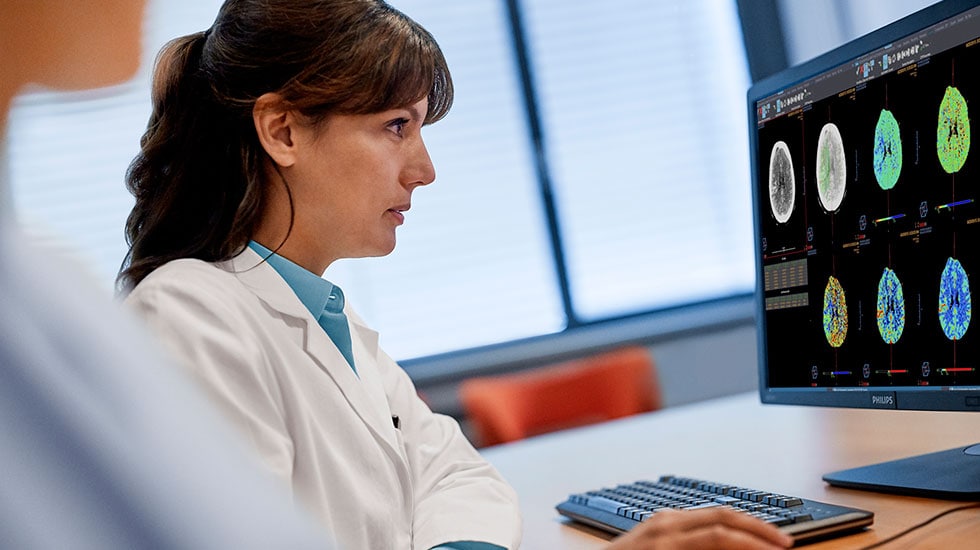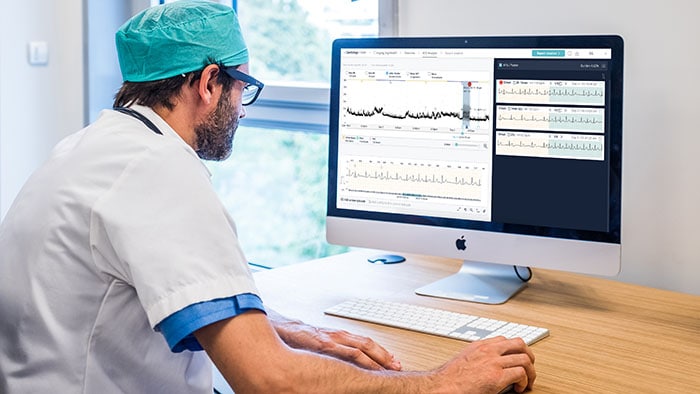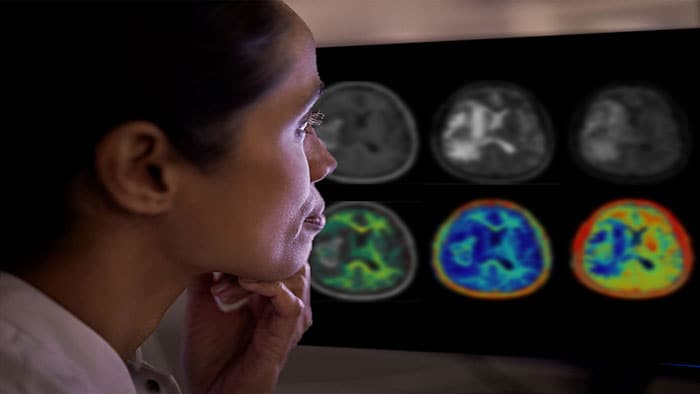Helping radiologists and physicians treat more patients and achieve better outcomes: AI-driven enterprise informatics from Philips at #ECR2024
Philips showcases AI-driven radiology workspace combining workflow
orchestration, reporting and 200+ advanced clinical applications
Feb 29, 2024 | 4 minute read
With the increasing prevalence and complexity of acute and chronic disease, radiologists are facing a tsunami of patient referrals and are looking for ways to help more patients, for example with shorter procedure times, while also trying to improve the performance of their departments. Coupled with today’s shortage of trained radiologists, it’s no wonder that the profession has a very high rate of staff burn-out, with 54% - 72% of diagnostic and interventional radiologists exhibiting these symptoms in the U.S. [1].

At the 2024 European Congress of Radiology, Philips is showing a unified radiology workspace that help to ease the burden on clinicians and empower caregivers across the enterprise to make fast and precise clinical decisions wherever care is delivered. Radiologists can benefit from a single workspace that combines worklist management, reporting and data interpretation with AI-enabled advanced clinical tools and third-party applications to help speed up detection of diseases. An integrated radiology workspace offers improved ways to process, prioritize and navigate imaging studies, identify subtle anomalies and personalize insights for tailored treatment plans.
Treating more patients – enhancing collaboration and quality of care
In the era of multidisciplinary collaboration, radiologists need to have advanced and clinically efficient tools to provide comprehensive and actionable reports, enabling faster and informed treatment decisions, as well as communication and referrals between radiologists, physicians, and specialists. Philips’ unified radiology workspace gives radiologists all relevant tools for confident reading and insightful reporting, including exam smart orchestration, advanced interactive analysis and AI-enabled diagnostic support [2]. By combining more than 70 advanced applications, over 100 third-party AI applications and native image processing in one workspace, using a single interactive reporting assistant, radiologists can analyze a high volume of routine and complex cases with efficiency and precision.
As radiology workloads surge, time becomes an invaluable resource. The right clinical tools enable radiologists to streamline their workflows by automating routine tasks, such as image processing, analysis, and report generation. This way, radiologists can dedicate more time on in-depth analysis, consultations, and patient interactions. This not only enhances their professional satisfaction but also paves the way for faster diagnoses and more responsive patient care. AI applications can help radiologists focus their expertise where it matters most – in critical decision-making – while leveraging AI to help process high volume studies and time-consuming tasks such as image segmentation, organ quantification, and lesion tracking.
Empowering radiologists to redefine efficiency – shared data completes the picture
A typical CT or MRI scan produces gigabytes of raw data, and the usefulness of that data goes far beyond the confines of the radiology department. It needs to flow seamlessly not just through but also beyond an enterprise informatics system so that it can be viewed and analyzed along with other patient data wherever and whenever clinical decision making takes place, both in the hospital or at a remote location.
As a matter of fact, remote clinical collaboration demand is dramatically increasing and there are many instances, such as virtual tumor boards, where cloud-based data sharing enables care teams to work together more efficiently and effectively.
“The need for ‘anytime, anywhere’ access to information is one of the major drivers behind healthcare informatics moving to cloud-based platforms, which are much better suited to the bandwidth demands of productivity enhancing initiatives such as remote image reading,” says Shez Partovi, Chief Innovation & Strategy Officer and Business Leader of Enterprise Informatics.
Better outcomes – automated clinical insights avoid information overload
Turning data into actionable insights is what clinical decision making is all about. However, the sheer amount of data now available on each individual patient itself poses a challenge, with physicians in danger of suffering from information overload. Philips HealthSuite Imaging [3] is the next generation cloud-based PACS, enabling radiologists and clinicians to adopt new diagnostic capabilities faster, increase operational efficiency via secure, safe and fast remote reading to overcome staffing shortages, and improve patient care.
It streamlines study interpretation and reporting into a single seamless application, enhanced through AI, while also enabling sophisticated image processing and simplified clinical workflows. Moreover, the cloud-based nature enables access to medical studies from both the hospital and remote locations. Health systems can also reduce on-premises hardware and IT management costs by moving to a secure, cloud-hosted storage platform.
“It’s the scalable computing power of the cloud that will enable radiology departments to tap into the transformative power of generative AI,” says Shez Partovi. “By turning vast amounts of imaging data into meaningful insights, AI can reduce the cognitive burden on radiologists and enable them to focus their expertise where it matters most.”
Philips at ECR 2024
During ECR 2024, Philips and AWS are hosting an industry symposium titled ‘Next generation radiology: cloud-first and generative AI as enablers for the future’ to explore how radiology informatics solutions benefit from secure, compliant, scalable cloud technology to improve security, cost and operational efficiency, including ways in which AI, generative AI, and machine learning can serve as a radiologist’s assistant to help enhance diagnostic speed and quality and support better patient outcomes.
Sources [1] Canon C.L., Chick J.F.B., DeQuesada I., et al. Physician burnout in radiology: perspectives from the field. Am. J. Roentgenol. 2022;218(2):370–374. doi: 10.2214/AJR.21.26756. https://pubmed.ncbi.nlm.nih.gov/34494444/
[2] AI-enabled solutions through Philips Advanced Visualization Workspace and third-party applications.
[3] HealthSuite Imaging may not be available in all regions. Please consult your local Philips representative for more details.








